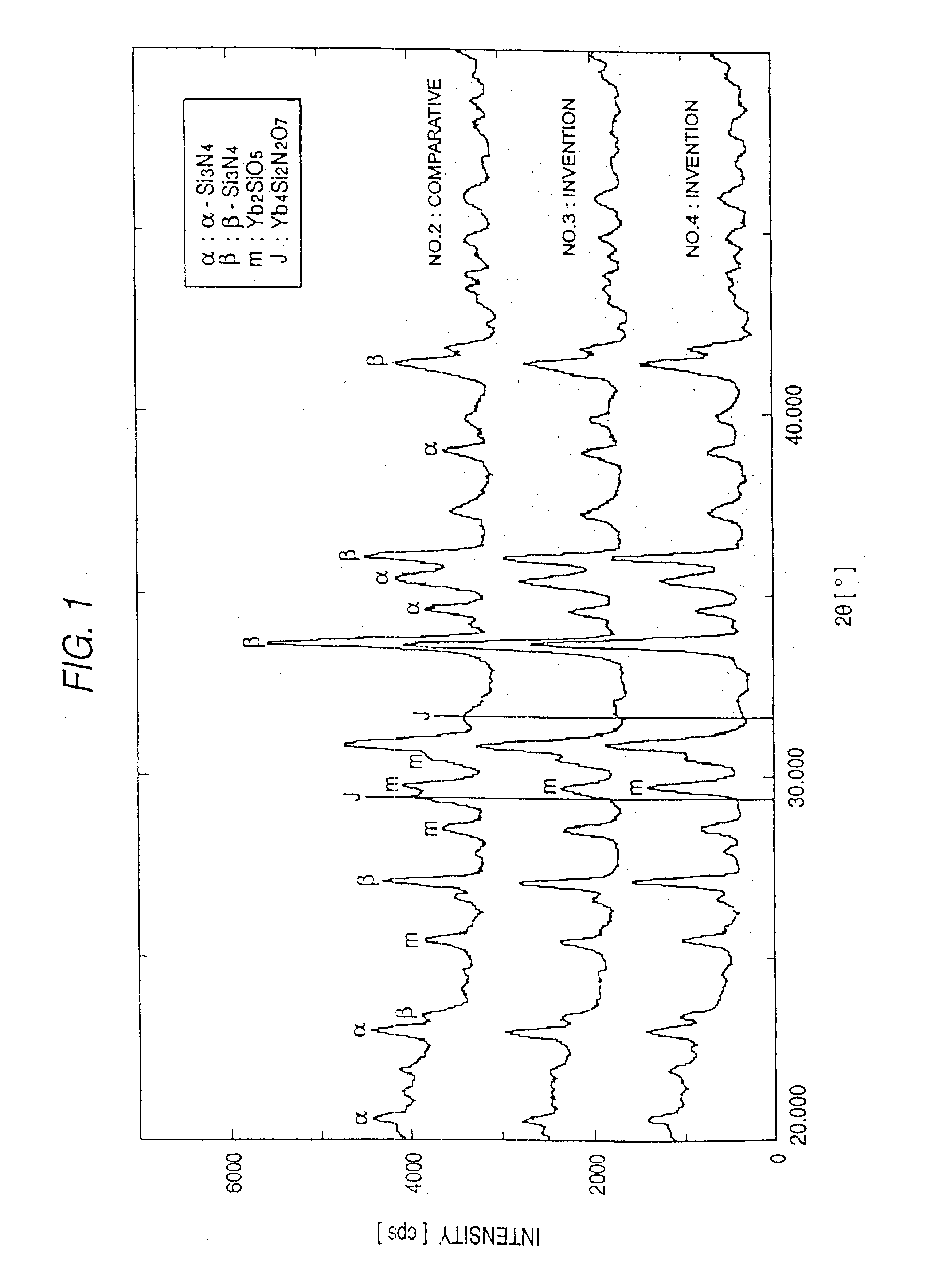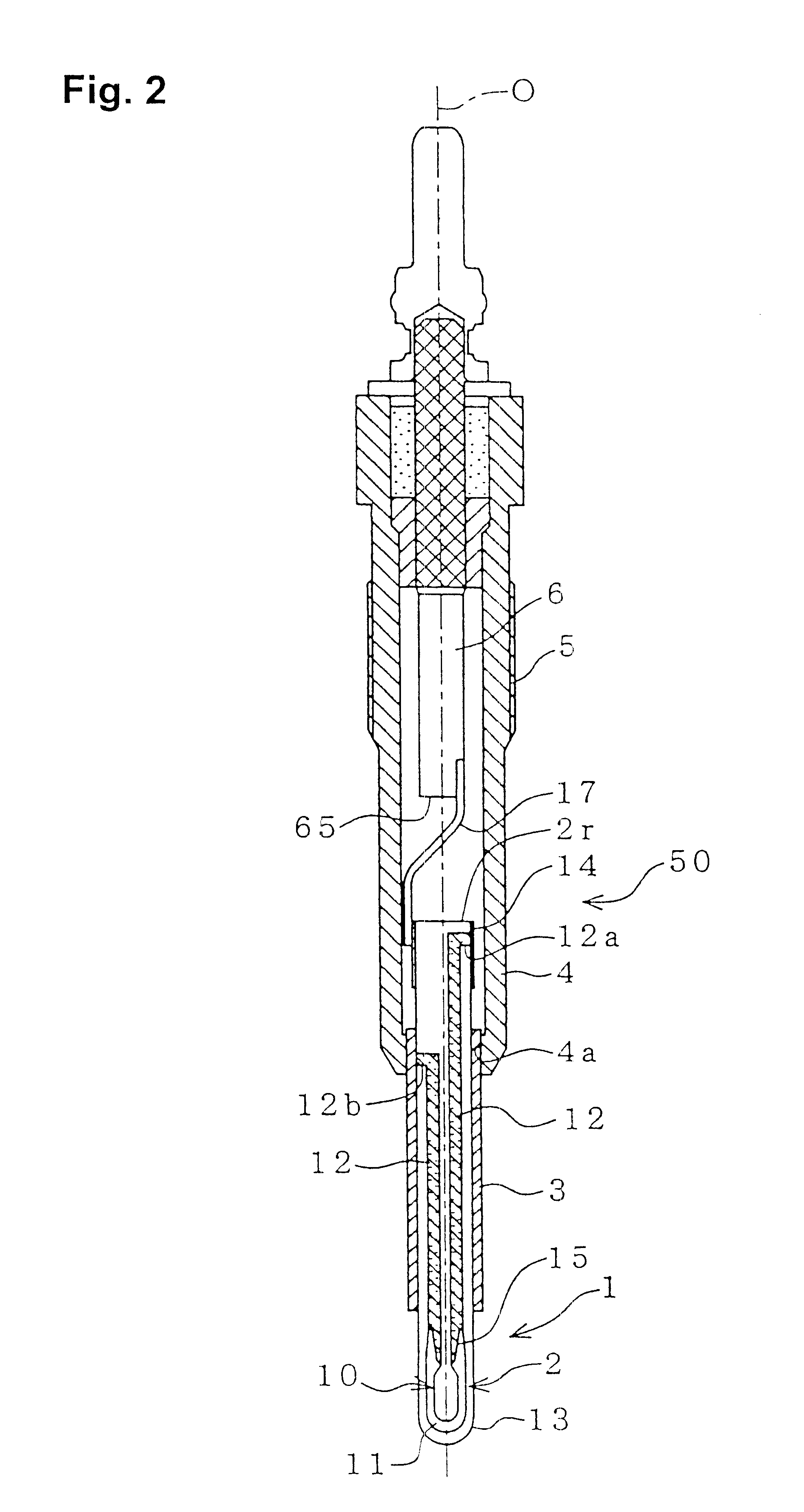Silicon nitride sintered material and production process thereof
a technology of silicon nitride and sintered material, which is applied in the direction of mechanical equipment, machines/engines, light and heating equipment, etc., can solve the problems of reducing affecting the service life of the sintered material,
- Summary
- Abstract
- Description
- Claims
- Application Information
AI Technical Summary
Benefits of technology
Problems solved by technology
Method used
Image
Examples
Embodiment Construction
As is apparent from FIG. 1, the peak of the J phase is not observed in X-ray charts of the silicon nitride sintered materials Nos. 3 and 4, which within the scope of the present invention, whereas the peak of the J phase is observed in the X-ray chart of the sintered material No. 2, which falls outside the scope of the present invention; i.e., the J phase (crystalline phase)) is generated in the sintered material No. 2. In FIG. 1, m represents a crystalline phase of mono-silicate (:Yb.sub.2 SiO.sub.5) that does not aggravate the high temperature corrosion resistance of the sintered silicon nitride.
As is apparent from Tables 1 and 2, in the sintered materials Nos. 14 and 15, in which the rare earth element oxide content is as high as 10.5 mol % (27.0 mass % or more), the J phase (crystalline phase) is generated, and increases in the weight through oxidation are as high as 0.15 mg / cm.sup.2 and 0.08 mg / cm.sup.2, respectively. Briefly, the sintered materials Nos. 14 and 15 exhibit poor ...
PUM
| Property | Measurement | Unit |
|---|---|---|
| flexural strength | aaaaa | aaaaa |
| flexural strength | aaaaa | aaaaa |
| particle size | aaaaa | aaaaa |
Abstract
Description
Claims
Application Information
 Login to View More
Login to View More - R&D
- Intellectual Property
- Life Sciences
- Materials
- Tech Scout
- Unparalleled Data Quality
- Higher Quality Content
- 60% Fewer Hallucinations
Browse by: Latest US Patents, China's latest patents, Technical Efficacy Thesaurus, Application Domain, Technology Topic, Popular Technical Reports.
© 2025 PatSnap. All rights reserved.Legal|Privacy policy|Modern Slavery Act Transparency Statement|Sitemap|About US| Contact US: help@patsnap.com



